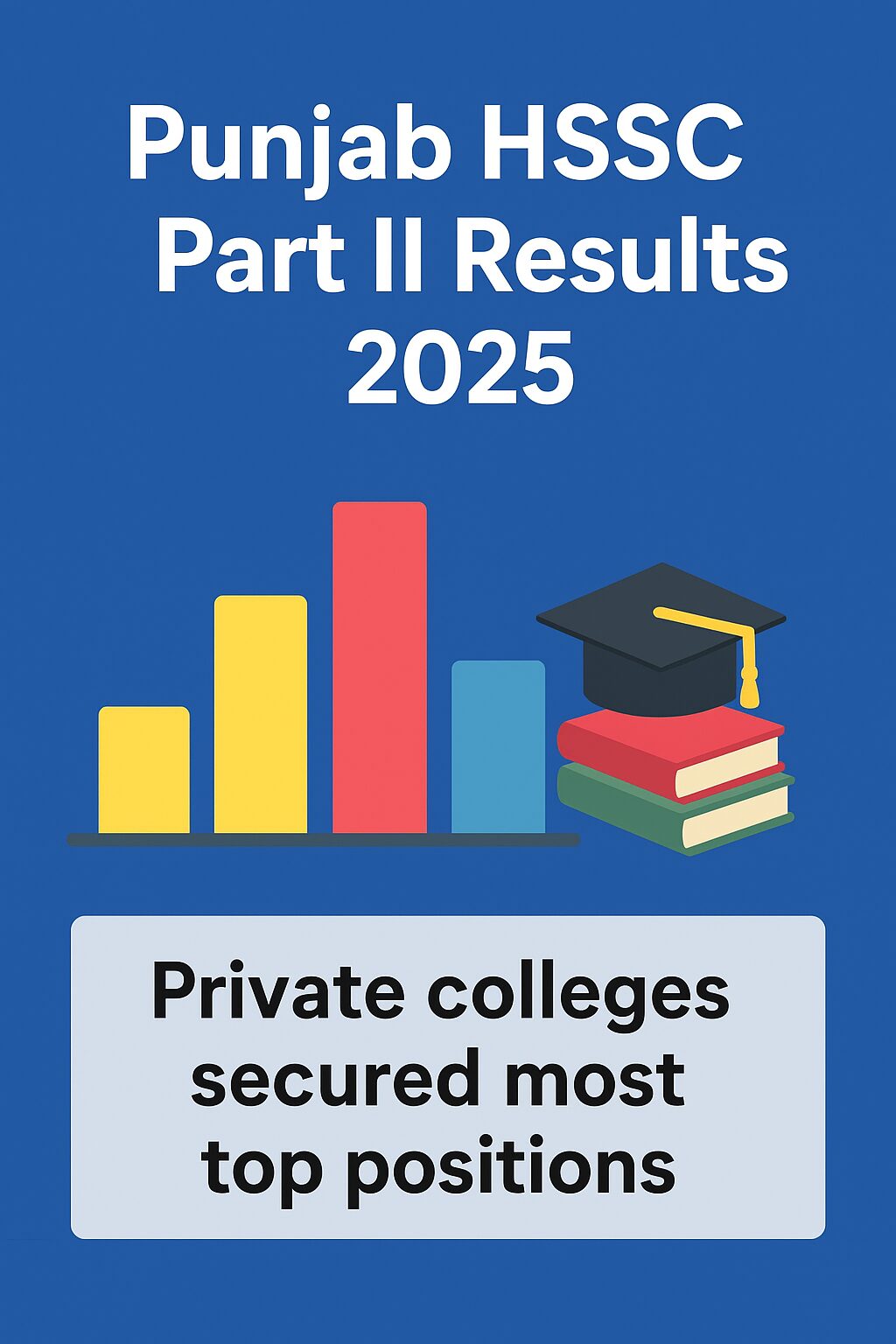LAHORE, September 2025:The HSSC (Intermediate Part II) results 2025 for Punjab have been announced, revealing a clear picture of academic performance across the province’s nine boards.
The results show that private colleges secured the majority of top positions, while government and semi-government institutions lagged behind.

Private Colleges Dominate Results
Among private institutions, the Punjab Group of Colleges stood out with an impressive number of top positions across multiple boards. Their success highlights the role of structured teaching, better facilities, and focused academic planning.
Experts note several reasons for this performance gap:
- More resources and infrastructure in private colleges.
- Planned academic culture, including mock exams and revision sessions.
- Performance-based teacher incentives that improve accountability.
- Parental support and coaching, giving students extra help outside class.
These factors help explain why private institutions outperformed, while public colleges—despite talented teachers and students—struggle with limited funding and resources.
Regional Trends
The pass percentage varied across different boards. Some boards recorded pass rates above 70–80%, while others remained closer to 50–60%. This reflects urban-rural divides, unequal access to qualified staff, and differences in facilities.
The Punjab Group of Colleges showed strong results in Lahore, Gujranwala, Faisalabad, Multan, Rawalpindi, Bahawalpur, Sahiwal, Sargodha, DG Khan, and the Federal Board, proving how consistent support can help students succeed across regions.
Lessons for Policymakers
The 2025 results underline steps needed to bridge the gap between public and private education:
- Provide resources to underperforming public colleges.
- Adopt best practices from top institutions like mock exams and teacher mentoring.
- Invest in teacher training focused on student engagement and assessment.
- Use data for planning, addressing the unique needs of each district.
- Support disadvantaged students with scholarships, remedial classes, and transport facilities.
Key Numbers
Across all boards, 335 top positions (first, second, and third) were awarded. Of these, 84% went to private colleges, while only 16% came from public institutions.
Another highlight was that female students once again outperformed male students, continuing a positive trend from previous years.
Conclusion
The Punjab HSSC Results 2025 show both achievement and challenges. While private colleges continue to lead, the results also provide important lessons for policymakers and educators. With better planning, teacher development, and equal opportunities, public colleges too can rise and ensure every student in Punjab has a fair chance to succeed.
